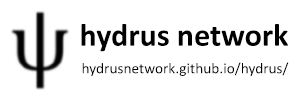>>10344
I did some basic research on the principles behind SIFT/SURF and BRISK/ORB, which are using a radically different approach compared to image hash. That pad is just a larger reference list that we can explore further.
SIFT is just an image pyramid (image hierarchy with progressively lower resolution) with points of focus (high contrast and/or corners) combined with affine transformation medallions for those points
https://opencv-python-tutroals.readthedocs.io/en/latest/py_tutorials/py_feature2d/py_sift_intro/py_sift_intro.html
SURF is just SIFT, but with more box filters for black-and-white contrasts (basically wavelets are JPEG compression like systems for it) to save more time from traditional SIFT
https://opencv-python-tutroals.readthedocs.io/en/latest/py_tutorials/py_feature2d/py_surf_intro/py_surf_intro.html
BRIEF takes a different approach than SIFT and SURF, where instead of finding edge markers and use them as a base, it uses random straight lines to get the right pattern (which outperforms regular patterns)
https://opencv-python-tutroals.readthedocs.io/en/latest/py_tutorials/py_feature2d/py_brief/py_brief.html
ORB is a blend of FAST and BRIEF rolled into one, which beats the other three by a long shot (but there are more methods on the reading list that are more recent)
https://opencv-python-tutroals.readthedocs.io/en/latest/py_tutorials/py_feature2d/py_orb/py_orb.html
There are others like FAST, BRISK, FREAK, KAZE and AKAZE that are less common, and people are experimenting with other methods.
If you want something that absolutely works try https://github.com/pippy360/transformationInvariantImageSearch which is pretty easy to understand (albeit expected to be slower than modern methods)
